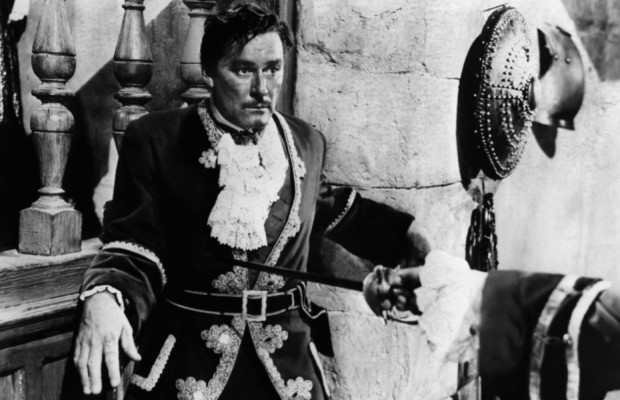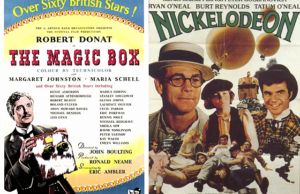The Master of Ballantrae (1953)

Toronto Film Society presented The Master of Ballantrae (1953) on Monday, May 25, 1981 in a double bill with National Velvet as part of the Season 33 Monday Evening Film Buff Series, Programme 10.
“With plenty of good, old-fashioned muscularity crowding a highly pictorial Technicolor frame, at least three-fourths of The Master of Ballantrae makes a rousing, spectacular outlet for a pair of estimable adventurers, Errol Flynn and the master himself, Robert Louis Stevenson. In the new Warner Brothers arrival at the Paramount yesterday, Mr. Flynn is leading a fine, predominantly British cast through one of the liveliest, handsomest and most absurd screen free-for-alls ever to leave the Victorian talespinner’s pen.
If the excessive length and staggeringly heroic exploits can be pinned on Warners and Mr. Stevenson, respectively, no one, assuredly, should question the lavish elasticity of the proceedings. It is played well by the entire cast, and seasoned throughout with some brazen drollery. The film was gleamingly authenticized in such locales as Scotland, England and Sicily.
Herb Meadow’s adaptation fittingly charts a cluttered, tumultuous odyssey for the indefatigable protagonist, leader of the fiery Durrisdeer clan and fugitive champion of the Stuart Restoration, as he engineers a magnificent career in high-seas piracy and returns home, a wiser, if no less boisterous, rebel. The direction of William Keighley is equally alert and scenic, whether scouring the craggy, heather strewn battlegrounds of the clansmen or capturing the lusty barbarism of the pirates’ island sanctuary. And since the dialogue is more often pungent than standard, the motivations and characterizations retain a surprising air of conviction, for all the flying kilts, sabers and sails.
Mr. Flynn is, in turn, bold, roguish and forgivably self satisfied in his best swashbuckler since The Sea Hawk, thirteen long years ago. The featured players, a spanking roud-up, are crisp, restrained and forceful, one and all, particularly Roger Livesey and Anthony Steel, and the ladies in the case, Beatrice Campbell and Yvonne Furneaux.
Last but not least, the truly stunning color photography of that British ace, Jack Cardiff, provides a canvas that stands as a model of its kind and fully rates the classic archive reserved for Mr. Stevenson, long, perhaps, after Mr. Flynn and company are forgotten. Meanwhile, Mr. Flynn is having himself, as well he might, a field day.”
New York Times by Howard Thompson, August 6, 1953
Notes compiled by David Wells















Leave a Reply